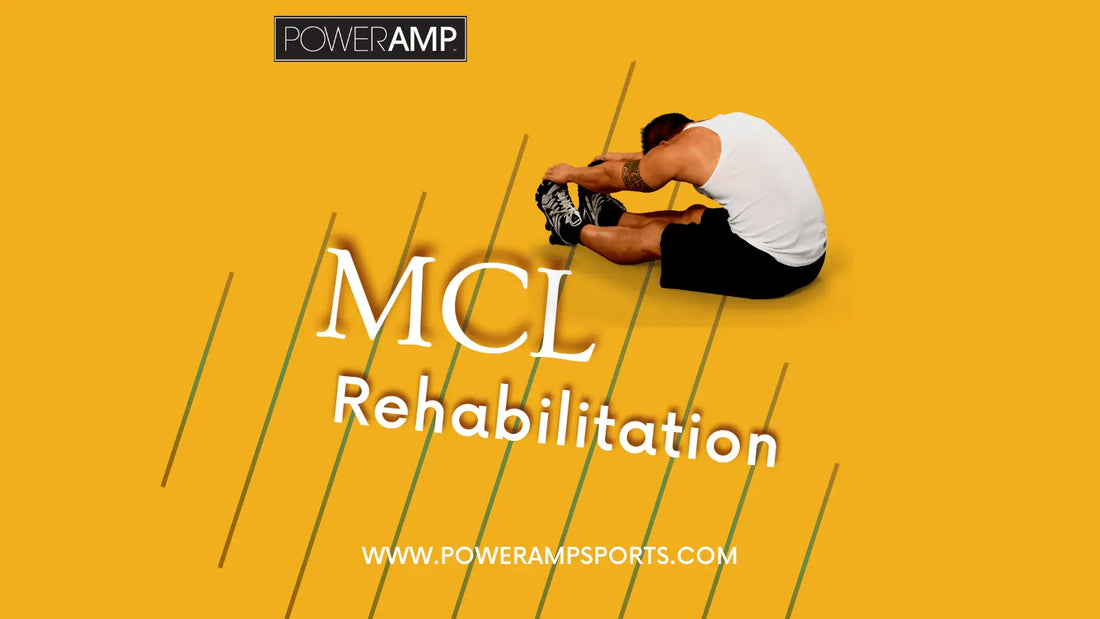The medial collateral ligament (MCL) is a bundle of solid fibres inside the knee. Contact and non-contact sports are common causes of MCL injuries. It usually occurs from an impact with other players on the field and can be very painful. In addition, medial collateral ligament injuries are often accompanied by other injuries like shin splints or patellar tendonitis.
A rehabilitation program is vital for those who have suffered from an MCL (Medial Collateral Ligament) injury. It's important to start moving the leg while exercising the muscles too slowly.
What to do:
- 1. When you exercise, always make sure you warm up your muscles first. It reduces the chances of injury or strain.
- 2. Start cycling for about five minutes on a stationary bike at a moderately slow pace. It will warm up your muscles.
- 3. Warm up your body with light exercises before moving on to strenuous workouts.
- 4. Work on individual muscles of the knees.
- 5. End your workout with stretching and deep breathing exercises.
- 6. Stretch your knee joints before you end your workout to release tension and prevent injury.
What not to do:
- 1. It would help if you stopped doing high-impact exercises or activities for the next 48 hours.
- 2. Avoid jumping and skipping (plyometric) exercises.
- 3. I find that the best exercises for tremor-prone legs are the stretching exercises because they simulate regular movements and make the legs feel more balanced.
- 4. Do be careful while using the Stairmaster or climbing stairs. If you feel any pain, stop right away.
- 5. If you have an injured lower back, I recommend you refrain from lunges for the first few weeks.
- 6. To get started, take a deep breath and then slowly squat down at a safe angle as you exhale. Don't fully extend your legs just yet.
PRICE is a general acronym for the treatments you should try if you get a sprain: Protection, Rest, Ice, Compression and Elevation.
- * Protection - Protect the MCL by avoiding any exercise that causes pain. Invest in neoprene supports like sleeves, braces, taping or apply ice therapy to reduce inflammation and keep the joint from staying flexed for long periods. You should also avoid putting excess weight on it and potentially aggravating it further.
- * REST - when you can by taking breaks from your training. Your body needs time to recover, but it can be hard not to push through the pain. Slowly ease back into running or agility exercises with guidance from your therapist.
- * ICE - To remove knee pain, try applying ice packs under your kneecap for 10-20 minutes every 1.5 to 2 hours. Alternatively, you could apply it every time you feel pain until the symptoms subside.
- * COMPRESSION - Apply a knee wrap with a compression bandage to the area. It will help stop bleeding and swelling. Use a hinged knee brace to support the joint for a few weeks to heal correctly. The therapist may recommend the right level of support for the patient. Knee braces available range in levels of support.
- * ELEVATION - It is essential to encourage blood flow to the heart for healing.
The Prevention Set includes the following products :
- Everyday Sports Probiotics 75Bn 60 capsules
- Everyday Sports Multivitamin 60 capsules
- Everyday Fish Oil 120 capsules
SHOP NOW: https://bit.ly/preventionset
Source Credits
SportmedbC



Leave a reply
Nunc vehicula quam semper odio varius tincidunt. Vestibulum ante ipsum primis in faucibus orci luctus et ultrices posue.
Please note, comments need to be approved before they are published.